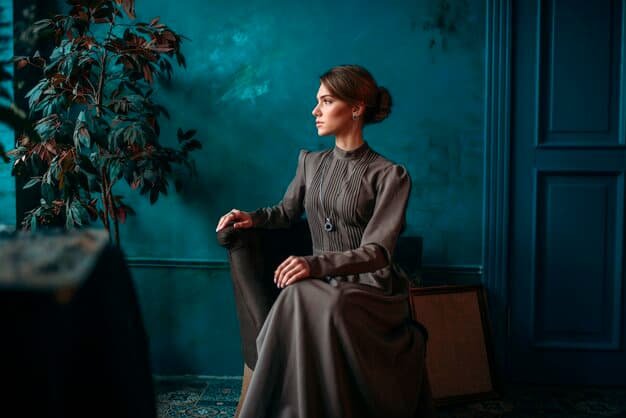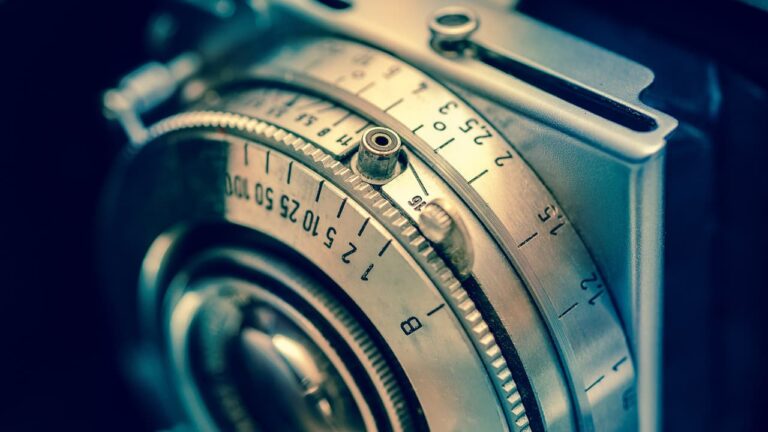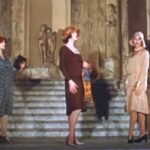Introduciton
In the ever-evolving world of fashion, women’s style has experienced a transformative journey. The choices of clothing reflect societal changes, technological advancements, and artistic influences. By examining women’s fashion through the decades, we gain a deeper understanding of the culture and zeitgeist of each era. Let’s journey together through this fashionable timeline.
The 1920s: The Roaring Twenties
The 1920s, often referred to as the Roaring Twenties, marked a significant turning point in fashion and culture. This decade brought about a dramatic departure from the conservative styles of the past, especially in women’s fashion. Let’s delve into the signature look, materials used, and iconic footwear of the 1920s, showcasing how this era redefined fashion.
Signature Look of the 1920s
- Drop-Waist Dresses: One of the most distinctive features of 1920s fashion was the drop-waist dress. These dresses were characterized by a waistline that sat lower than the natural waist, often around the hips. The drop-waist created a straight and loose silhouette, which was a stark contrast to the fitted corsets and hourglass shapes of the previous decades.
- Cloche Hats: Complementing the drop-waist dresses were cloche hats. These snug-fitting, bell-shaped hats were designed to sit low on the forehead and cover the ears. They were often adorned with decorative elements like ribbons, bows, or feathers. Cloche hats became an essential accessory, adding a touch of elegance to the overall look.
- Strings of Pearls: To complete the ensemble, women in the 1920s frequently wore long strings of pearls. These pearls, whether real or imitation, were often draped in multiple layers, reaching down to the waist. Pearls symbolized sophistication and added a touch of luxury to the outfit.
Materials and Embellishments
- Silk: Silk was a favored fabric in the 1920s. It offered a luxurious drape and was commonly used for evening dresses and formal wear. Silk allowed for the graceful flow of the drop-waist dresses, enhancing their elegance.
- Wool: Wool was another essential material, especially for winter attire. It was used for sweaters, coats, and heavier dresses. Wool provided warmth while maintaining the fashionable silhouette of the era.
- Cotton: For everyday wear and summer fashion, cotton was a popular choice. It was breathable and comfortable, making it suitable for the more casual, sporty styles that emerged during this period.
- Intricate Beading and Sequin Designs: The 1920s were known for their elaborate embellishments. Dresses were adorned with intricate beadwork and sequin designs, often depicting geometric patterns or floral motifs. These embellishments added glamour and shimmer to the dresses, perfect for the energetic social scene of the era.
Iconic Footwear
- T-Strap Shoes: T-strap shoes were the go-to footwear in the 1920s. These shoes featured a T-shaped strap that extended from the vamp down to the arch of the foot. They were both stylish and practical, providing support for dancing the Charleston, a popular dance of the time.
- Mary Jane Shoes: Mary Jane shoes also made a significant impact on 1920s fashion. These low-heeled, closed-toe shoes had a strap across the instep, usually fastened with a button. Mary Janes were a versatile choice, suitable for both daywear and evening events.
The 1930s: Elegance Amidst the Great Depression

The 1930s were marked by the economic challenges of the Great Depression, which significantly influenced the fashion of the era. The need for more conservative and functional clothing was apparent, but the allure of Hollywood and the silver screen continued to inspire glitz and glamour. In this detailed exploration, we will delve into the signature look, materials used, footwear choices, and the influence of Hollywood starlets on the fashion of the 1930s.
Signature Look of the 1930s
- High-Waisted Dresses: The signature look of the 1930s was defined by high-waisted dresses. These dresses featured a waistline that was raised to just below the bust, creating an elongated silhouette. The high waistline was often accompanied by a flared skirt that flowed gracefully to the ankles.
- Puffed Sleeves: Puffed sleeves were a prominent feature of 1930s fashion. These sleeves added a touch of femininity and softness to the overall look. Whether short or long, puffed sleeves were a common design element in both day and evening wear.
- Hollywood-Inspired Evening Gowns: The allure of Hollywood had a significant impact on eveningwear in the 1930s. Evening gowns were characterized by bias-cut draping, elegant silhouettes, and intricate embellishments. The glamour of Hollywood was within reach for many through these exquisite gowns.
Materials During the Great Depression
- Cheaper Fabrics Like Rayon: The economic hardships of the Great Depression led to the introduction of more affordable materials like rayon. Rayon offered a lustrous finish similar to silk but at a lower cost, making it a practical choice for everyday wear.
- Silk for Luxurious Garments: While cheaper fabrics gained popularity, silk continued to be the preferred choice for luxurious garments, particularly evening gowns. The sheen and drape of silk added an element of opulence to special occasion wear.
Iconic Footwear: Pumps with Moderate Heels
- Pumps with Moderate Heels: Footwear in the 1930s was characterized by pumps with moderate, often chunky, heels. These shoes provided comfort and stability while complementing the elegant fashion of the era. Pumps were versatile, suitable for both day and evening attire.
The Hollywood film industry played a pivotal role in shaping fashion during the 1930s. Leading actresses, often referred to as “starlets,” became style icons. Their on-screen personas and off-screen appearances heavily influenced women’s fashion. Notable starlets like Greta Garbo, Jean Harlow, and Bette Davis showcased glamorous and sophisticated styles that were emulated by women around the world.
The 1940s: Wartime Resourcefulness

The 1940s were a decade marked by the impact of World War II on fashion. The scarcity of resources due to fabric rationing, coupled with the growing presence of women in the workforce, led to practical yet stylish fashion choices. Let’s delve into the signature look, materials used, footwear, and the post-war “New Look” that defined this era.
Signature Look of the 1940s
- Tailored Suits: The signature look of the 1940s for both men and women was the tailored suit. These suits were characterized by fitted jackets with padded shoulders and straight skirts. The emphasis on structured silhouettes was a response to the need for practicality and durability during wartime.
- A-Line Skirts: A-line skirts gained popularity during this era. These skirts were narrower at the waist and flared out towards the hem, creating a flattering and functional design. They allowed for ease of movement while maintaining a sense of style.
- Wide-Brimmed Hats: Women of the 1940s often completed their outfits with wide-brimmed hats. These hats not only provided shade but also added an element of sophistication to the overall look. Styles varied, from the simple and elegant to more elaborate designs.
Materials During Wartime
- Wool: Wool became a staple material during the war due to its durability and warmth. Woolen suits and coats were highly practical choices for both men and women, helping them endure the challenging times.
- Synthetic Fabrics: As silk was reserved for military purposes like parachutes, the fashion industry turned to synthetic fabrics such as rayon and nylon. These materials were used to create blouses, stockings, and other clothing items, providing alternatives to traditional silk.
Footwear Choices
- Sturdy Heeled Oxfords: Sturdy heeled oxfords were the preferred choice for women’s footwear. These shoes featured a low to medium heel and a closed-toe design, offering comfort and support for women who were increasingly active in the workforce.
- Wedges: Wedge heels also gained popularity during this period. They provided additional height and comfort, making them suitable for long hours on the job. Wedges were a practical and fashionable option.
The Post-War “New Look”
With the conclusion of World War II in 1945, the fashion landscape underwent a significant shift. Christian Dior’s “New Look” emerged as a defining trend of the late 1940s. This new style emphasized femininity, luxury, and opulence, in stark contrast to the utilitarian wartime fashion. Key elements of the “New Look” included:
- Full Skirts: Dior introduced full, voluminous skirts that required more fabric. This was a deliberate departure from the austerity of wartime fashion.
- Nipped Waists: The “New Look” featured cinched-in waists, highlighting the hourglass figure and a return to a more traditional, feminine silhouette.
- Luxurious Fabrics: Silk, satin, and other luxurious materials returned to the forefront of fashion, bringing a sense of indulgence and glamour.
The 1950s: Post-war Prosperity

The 1950s marked a distinctive era in fashion, characterized by a return to opulence and the reinforcement of traditional gender roles. During this decade, women’s fashion celebrated the hourglass figure, exuding glamor and femininity. Let’s delve into the signature look, materials employed, the iconic debut of the bikini, the rise of stiletto heels, and the overarching theme of glamor that defined this remarkable period.
Signature Look of the 1950s
- Full Skirts: One of the defining features of 1950s fashion was the prevalence of full skirts. These skirts featured multiple layers of fabric, creating a voluminous, flared silhouette. The full skirt placed a strong emphasis on the waist and hips, contributing to the iconic hourglass shape.
- Cinched Waists: The cinched waist was a focal point of women’s fashion in the 1950s. Dresses were meticulously designed to have nipped-in waists, often accentuated by wide belts or sashes. This design element further highlighted the hourglass figure.
- The Debut of the Bikini: The 1950s marked the revolutionary debut of the bikini, a two-piece swimsuit that represented liberation and a departure from conventional swimwear. The bikini offered women more freedom of movement and set the stage for more daring swimwear styles.
Materials Employed
- Satin, Silk, and Velvet: The 1950s were characterized by the use of opulent and luxurious fabrics. Satin, silk, and velvet were favored materials, particularly for evening gowns and formal wear. These fabrics contributed to an air of elegance and luxury.
Iconic Footwear: Stiletto Heels
- Stiletto Heels: Stiletto heels took the fashion world by storm in the 1950s. These high, slender heels transformed footwear, adding sophistication and sensuality to women’s shoes. Stiletto heels were paired with both everyday and evening attire, making a bold fashion statement.
The 1950s were synonymous with glamor and the celebration of femininity. Fashion of this era exuded a polished and refined look. Women often accessorized with gloves, pearls, and veiled hats for daytime events. Even casual wear featured tailored blouses and high-waisted trousers, maintaining an overall sense of elegance.
The 1960s: Youthful Rebellion

The 1960s marked a vibrant era characterized by youth culture, liberation, and rebellion. Fashion in this decade underwent a significant transformation, with the iconic miniskirt symbolizing the spirit of change. Let’s delve into the signature look, materials used, footwear choices, and the influence of fashion icons like Twiggy that defined the 1960s.
Signature Look of the 1960s
- Mod Dresses: The signature look of the 1960s was the mod dress. Mod dresses were characterized by their clean lines, geometric shapes, and a disregard for traditional waistlines. They often featured A-line or shift silhouettes that were short in length, embracing the youthful and carefree spirit of the era.
- Bell-Bottom Pants: Another iconic garment of the ’60s was the bell-bottom pants. These trousers had a narrow fit at the waist and hips but flared dramatically from the knee downwards. They became a symbol of rebellion and counterculture.
- Psychedelic Prints: The 1960s were known for their psychedelic prints, featuring bold, colorful, and abstract designs. These prints adorned dresses, blouses, and even accessories, reflecting the experimentation and free-thinking of the era.
Materials: The Rise of Synthetics
- Polyester and Synthetics: The 1960s saw the prominence of synthetic fabrics, particularly polyester. These materials were favored for their durability, affordability, and ability to hold vibrant colors and prints. Polyester allowed for the creation of the bold and eye-catching fashion styles of the era.
Iconic Footwear: Go-Go Boots and Block-Heeled Pumps
- Go-Go Boots: Go-go boots were a footwear sensation of the 1960s. These knee-high or thigh-high boots had a sleek, minimalistic design and were often made of patent leather or vinyl. They symbolized the youthful and adventurous spirit of the decade.
- Block-Heeled Pumps: Block-heeled pumps also gained popularity during this time. These shoes featured a chunky, low block heel that provided comfort and stability while still embracing the mod aesthetic. They were versatile, suitable for both day and evening wear.
Fashion icons like Twiggy, a British model and actress, played a pivotal role in shaping the fashion trends of the 1960s. Twiggy’s androgynous appearance, short haircut, and minimalist fashion choices challenged traditional gender norms. Her unique look inspired the adoption of a more youthful and non-conformist style, further fueling the rebellion of the era.
The 1970s: Bohemian Rhapsody

The 1970s marked a distinct shift in fashion, embracing a bohemian and disco-influenced aesthetic that stood in stark contrast to the previous decade. This era was characterized by a unique blend of free-spirited, bohemian styles and the glamorous allure of disco. In this comprehensive exploration, we will delve into the signature look, materials utilized, footwear choices, and the influence of cultural events such as Woodstock and Studio 54 that defined women’s fashion in the 1970s.
Signature Look of the 1970s
- Flowy Maxi Dresses: One of the most iconic features of 1970s fashion was the flowy maxi dress. These dresses featured long, flowing skirts that often brushed the floor. They were known for their loose, comfortable fit and often incorporated bold, colorful prints, paisleys, or florals, reflecting the bohemian influence.
- Jumpsuits: Jumpsuits also gained popularity during this era. They were available in various styles, from casual and utilitarian to glamorous and disco-ready. Jumpsuits were known for their comfort and versatility.
Materials: Satin, Suede, and Denim
- Satin: Satin was a favored material in the 1970s, particularly for eveningwear. Its smooth and lustrous texture added a touch of glamour to the era’s disco fashion.
- Suede: Suede made a prominent appearance in 1970s fashion. Suede jackets, skirts, and accessories were embraced for their soft, luxurious feel.
- Denim: Denim continued to be a staple fabric, with flared denim pants (often referred to as “bell-bottoms”) being an iconic choice in both casual and dressy ensembles.
Iconic Footwear: Platforms and Clogs
- Platforms: Platform shoes were a defining footwear choice of the 1970s. These shoes featured thick soles that extended from the toe to the heel, creating a raised platform. They were available in various styles, from sandals to boots, and added height and drama to outfits.
- Clogs: Clogs were another popular shoe style in the 1970s. These shoes were typically made of wood and featured a chunky, comfortable design. Clogs were favored for their casual yet stylish appeal.
Influence of Cultural Events
- Woodstock: The Woodstock Festival of 1969 and its countercultural ethos had a lasting impact on fashion in the early ’70s. It influenced the bohemian, hippie-inspired styles that celebrated free-spirited self-expression.
- Studio 54: The legendary Studio 54 nightclub in New York City, which opened in 1977, played a significant role in shaping the glamorous, disco-influenced fashion of the late ’70s. The nightclub’s lavish parties and bold fashion choices influenced the glittering, hedonistic styles of the disco era.
Conclusion
Women’s fashion through the decades offers a riveting glimpse into societal shifts and artistic expressions. Each decade, with its unique challenges and celebrations, has left an indelible mark on the fashion tapestry. By understanding these shifts, we appreciate the rich tapestry of style evolution and its broader implications.
For enhanced comprehension, refer to this video.
FAQs
The end of World War I, jazz music, and women’s suffrage movements played significant roles.
Yes, economic shifts, like the Great Depression, directly impacted the affordability and availability of materials.
The 1960s, with its youth rebellion and the introduction of the miniskirt, saw a massive shift.
Technological advancements introduced new materials like polyester and later influenced fashion accessibility through mass media.
Celebrities have been trendsetters, from the Hollywood starlets of the ’30s to fashion icons like Twiggy in the ’60s.







